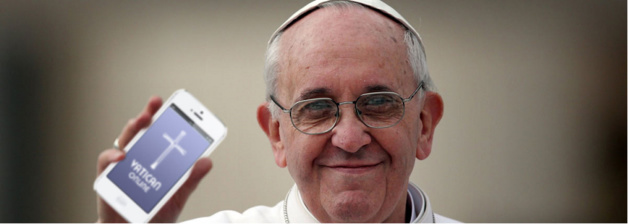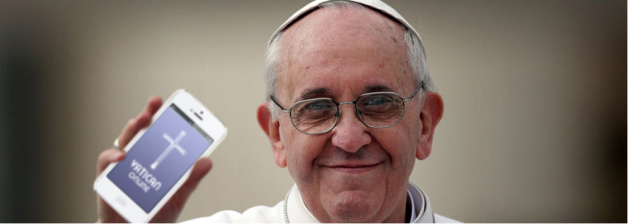
Rights Reserved
The American website Life Church had already launched an app to read the Bible in 2008. With versions translated in more than 600 languages and audio reading of the Bible, this religious app is the most used one in the world. Available on Android, iOS and Windows Phone, this app has already been downloaded more than 140 million times and is currently available in its fifth version.
It was in March 2010 that the Messe Info app was launched in France, gathering mass schedules, as well as great Christian events. Then in November 2010, the leading portal of the Catholic Church unveiled its mobile application : Eglise Info, allowing you to follow the latest developments of the Church live. Since then, more and more churches have decided to connect to the Internet.
Mobile applications to get closer to worshippers
Last November, the Diocese of Montreal launched an app to be closer to its worshippers. Thanks to an interactive map, it is possible to locate the closest church and to know the upcoming mass. The app also allows you to be informed of the latest events concerning the religion and sends you directly to Youtube links. On the official website of the Diocese of Montreal, you can find the section “social media” where you can read the following: “The new means of communication are giving the Church an extraordinary opportunity to correspond directly with millions of people”.
The app also works as a calendar for the users because of the events and activities initiated by the Diocese are reported. As an online community for worshippers, this app acts are a real social media where Catholics can submit a prayer, read prayer intentions or pray for others. Moreover, the Diocese of Montreal hopes to help out tourists who want to visit a church, diverting from the original strictly religious use of the mobile app.
The Church often plays the role of the State in Africa as this continent hosts a very dense catholic population that is hard to know and sometimes difficult to communicate with. The smartphone revolution and the creation of mobile apps by churches helped to create a bond between worshippers and the churches.
In Nigeria, the most Christian populated African country, certain communities have more than ten thousands members. With those apps, ministers and priests can manage them when they don’t know their identity, in addition to encouraging the community to pray. These apps allow the church to administer and identify the population in a continent where states are sometimes failing to do so. Churches provide social assistance and other services to its community.
Opinion is divided when facing this new mean of communication. A part of the Churches thinks that the Internet, first vector of globalization, will allow the Christian faith to spread and therefore evangelize more souls. By crossing borders and creating links between Christians, Internet and more particularly mobile apps build a community more easily and at a fast pace.
However, differing opinions exist. Certain people are scared that the possibility to pray from home with mobile phones can crush a church’s community. Since everything is made possible, even at a distance, it might be possible that the faithful might not feel the need to move. Being present at mass, meeting the live body of the Church, talk with other worshippers; all those Christian habits could be replaced by these new technologies.
However, these examples show and prove that religion and new technologies are not incompatible. On the contrary, these mobile apps allow Church leaders to address a wider audience, especially young people. On the 47th World Communication Day, Pope Benedictus XVI said the following to the Christian community: “The ability to employ the new languages is required, not just to keep up with the times, but precisely in order to enable the infinite richness of the Gospel to find forms of expression capable of reaching the minds and hearts of all.” The Holy Father had encouraged those initiatives because they would be an additional mean to practice and spread the word.
Reflected by Pope Francis being close to his followers, the mobile app revolution in the world churches brings the young and religion back together and gathers believers together. The Church has always been a social network, and is simply adapting its mode of operation to the world’s expectations and to the new communication challenges by creating mobile apps.




























